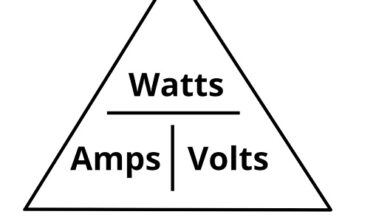Difference between DNA and RNA Similarities and FAQs
DNA and RNA
In this article we will provide you the Difference between DNA and RNA Similarities and FAQs.
What does DNA mean?
DNA is short for deoxyribonucleic acid. It is a nucleic acid that is part of the genetic material and contains the information necessary for the functioning of all living beings. In its structure, DNA is organized into two long helical chains intertwined with each other, known as a double helix. These chains are made up of four different types of molecules called nucleotides (A, C, T and G). These are the fundamental elements responsible for storing the genetic information that determines hereditary characteristics. DNA is also responsible for regulating cellular processes important for the proper functioning of the organism and controlling its basic metabolic activities .
What does arn mean?
RNA (ribonucleic acid) is a type of nucleic acid that is made up of ribose and nucleotides. It is involved in the regulation of cellular metabolism, embryonic development and response to external environmental stimuli. It is found mainly in eukaryotic cells, being responsible for transcribing genetic information contained in DNA for its subsequent translation into protein language. RNA also plays an important role as an energy source for synthesizing proteins known as enzymes, as well as forming functional parts of some single-celled living organisms. Therefore, RNA is essential for transmitting genetic information between generations and providing instructions to our cells on how to function properly.
Similarities between DNA and RNA
DNA and RNAThey are two chemical molecules similar in structure. Both contain a chain of nucleic acid, which binds to four different types of nitrogenous bases: adenine, guanine, cytosine and thymine for DNA; or uracil instead of thymine for RNA. Both have the same basic function: storing hereditary information to transmit genetic characteristics from one generation to the next. However, there are some important differences between them. The first is that DNA is only found in the cell nucleus (within the chromosome) while RNA can be found outside the nucleus. The second is that coding segments (genes) are first copied from DNA to RNA during transcription before being translated into proteins during synthesis by mRNA.
Differences between dna and rna
DNA and RNA are two biological molecules found in almost all cells. Both contain genetic information, which means they are primarily responsible for heredity. However, there are differences between them. DNA is a long nucleic acid with a double helix, while RNA is a shorter nucleic acid with a single-stranded or branched structure. The main function of DNA is to store genetic information, be transmitted through generations and initiate the process of protein synthesis in cells; On the other hand, RNA’s main function is to carry information from the DNA to the ribosomes for translation and interpretation to finally produce the protein necessary for cellular functioning.
Frequent questions about DNA and RNA
What is DNA What is it?
DNA (deoxyribonucleic acid) is a molecule that contains the genetic information of all living organisms. This information is encoded in the instructions to construct and regulate the behavior of each organism, as well as the biological inheritance passed to future generations. DNA is made up of two long chains of atoms called nucleotides, which twist around each other to form a double helix; Both chains are complementary to each other, which means that part of their components can be exchanged without losing their function.
What is DNA and where is it found?
DNA (deoxyribonucleic acid) is a molecule that contains the genetic information of living beings. It is found in the nucleus of cells, as well as in mitochondria and chloroplasts.
What are the three functions of DNA?
The three main functions of DNA are: (1) Store genetic information; (2) Encode protein synthesis; and (3) Establish the inheritance pattern.
What are the types of DNA?
The types of DNA are nuclear DNA, mitochondrial DNA, and ribosomal RNA. Nuclear DNA is found in the nucleus of all eukaryotic cells and contains most of the genetic material. Mitochondrial DNA is a circular molecule found outside the cell nucleus in organelles called mitochondria. It is involved in energy production for eukaryotic cells. Ribosomal RNA (rRNA) is a nucleic acid present mainly inside ribosomes, where it participates in protein synthesis through the process known as genetic translation.
What is RNA and what is its function?
Ribonucleic acid (RNA) is a biological molecule present in all living cells. It is made up of simple units called nucleotides, which contain nitrogen and join together to form long chains of RNA. RNA plays several important roles, including encoding genetic information for protein synthesis and transporting genetic material in and out of cells.
What is the difference between DNA and RNA?
The main difference between DNA and RNA is that DNA is a double helix stored in the nuclei of cells, while RNA is found everywhere within the cell. DNA contains the genetic instructions for building proteins, including the amino acids needed to create cellular structures. On the other hand, RNA helps transfer information from DNA to sites where it can be used to make proteins. Additionally, there are some structural differences between DNA and RNA: while DNA consists of two complementary strands linked by hydrogen bonds forming a double helix, RNAonly has a single strand connected by nitrogen-oxygen bridges.
What are the three types of RNA?
The three types of RNA are: messenger RNA (mRNA), ribosomal RNA (rRNA), and transfer RNA (tRNA).
Where is RNA located?
RNA is located inside the cell, in the nucleus to be specific. It is present in both prokaryotic and eukaryotic cells.




